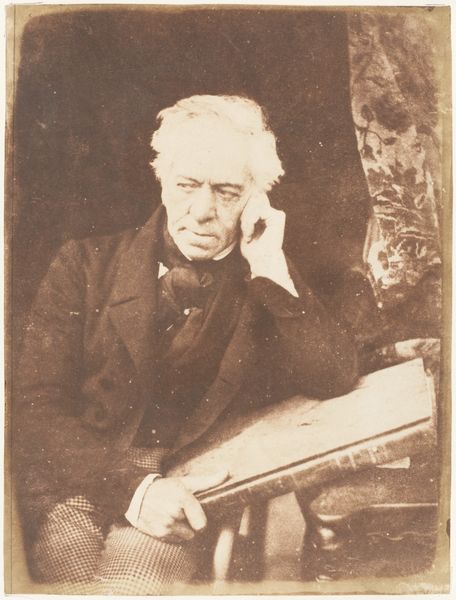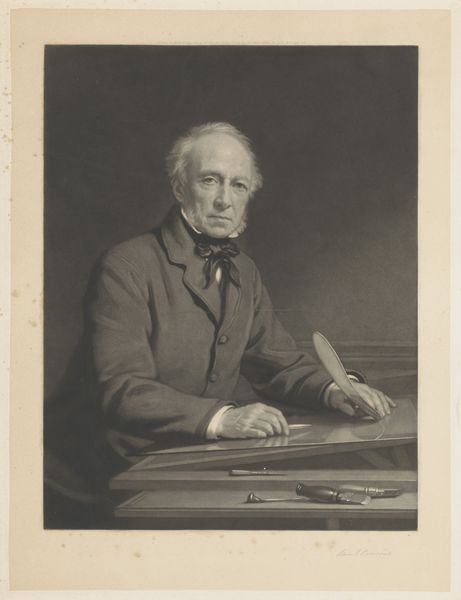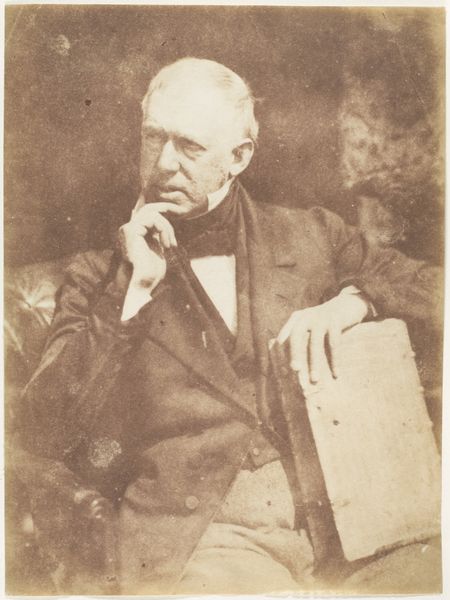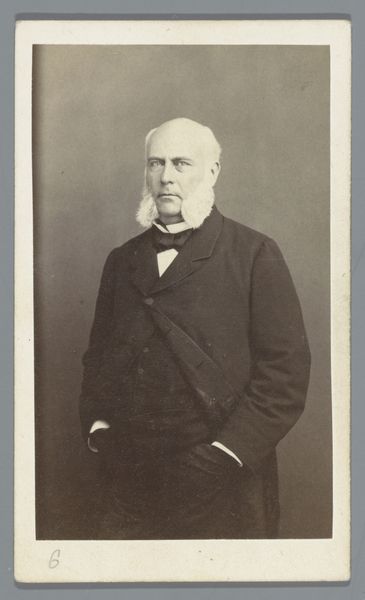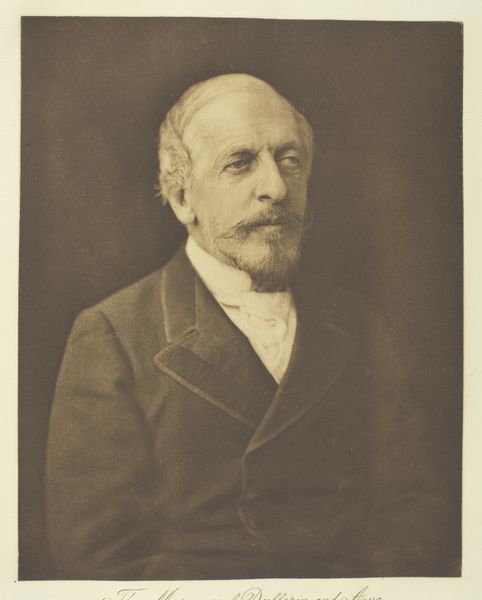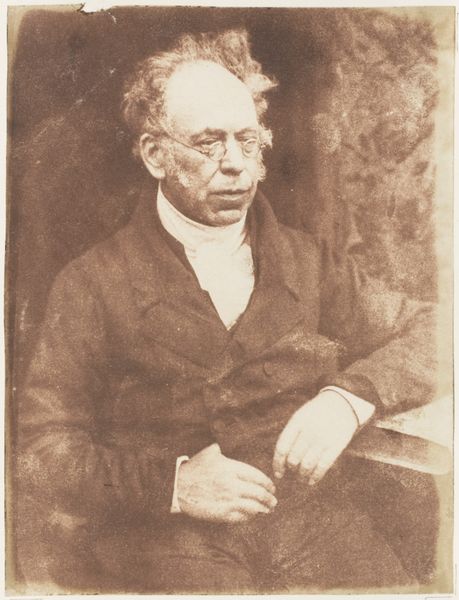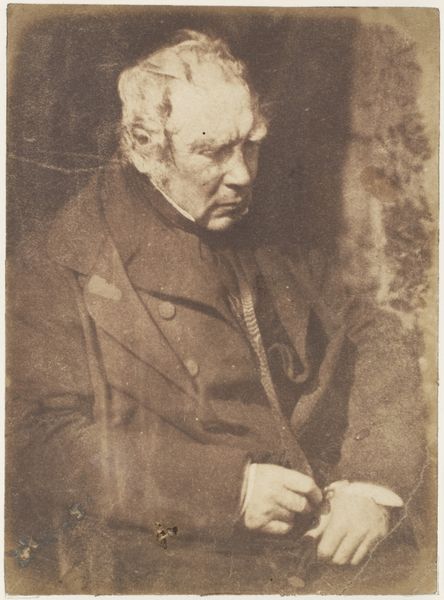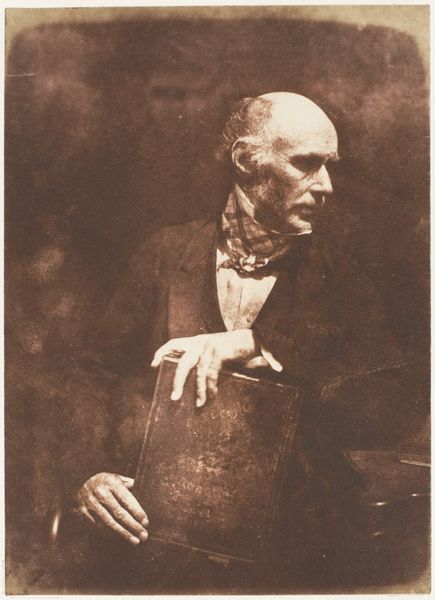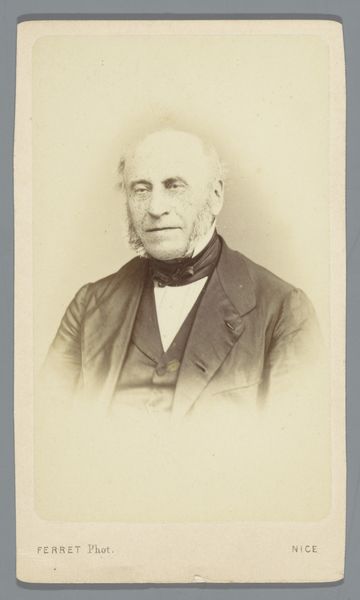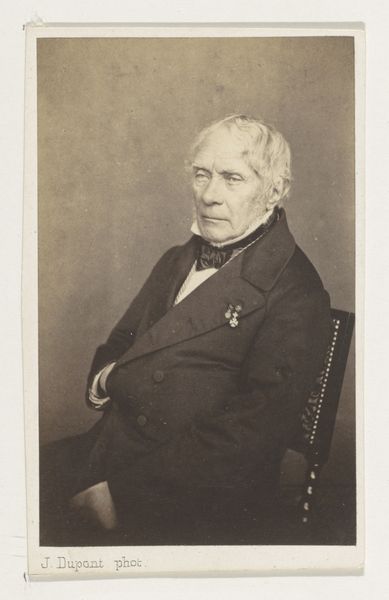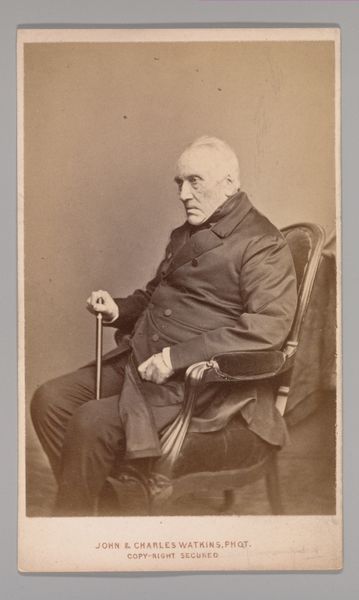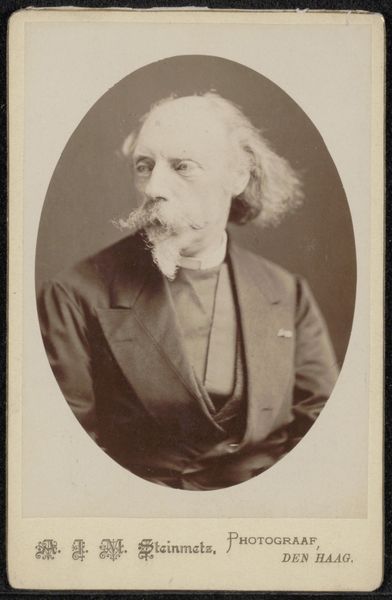
photography, gelatin-silver-print
#
portrait
#
photography
#
historical photography
#
romanticism
#
gelatin-silver-print
#
men
Copyright: Public Domain
Curator: I'm immediately struck by the texture of this photograph, almost like a memory fading. Editor: This gelatin-silver print, "Swinton," by Hill and Adamson, dating from 1843 to 1847, presents an intriguing case study. It’s held here at the Metropolitan Museum of Art. Looking at it now, what contextual details jump out to you? Curator: Considering it's a portrait, the subdued lighting creates a somewhat somber mood. The man’s monocle, the cane, all suggest a particular class and era, evoking ideas about Victorian society, perhaps even something related to the Reform Acts occurring at this time in British political life. Editor: Visually, I find the contrast between the sharp detail in the face and the softer background quite compelling. Notice how the man's features are distinct while everything else seems to melt away, creating a dream-like, symbolic effect. To me, the cane and elaborate chair represent status but also confinement—holding him up while he is simultaneously bound to them. Curator: It's a pertinent reminder of how photography, even in its early stages, was never truly objective. Consider how this image would function in discussions of wealth and privilege within a period marked by increasing social inequalities. The subject’s posture hints at both authority and perhaps fragility. What narratives do you suppose Hill and Adamson wanted to craft? Editor: Indeed. The pose carries meaning. His gaze seems directed toward the light, or perhaps wisdom, seeking answers that history or family cannot offer him. But, for me, the lasting power of an image like this relies on this photograph's ability to provoke those unanswered questions generation after generation. What new layer do *we* add to this image as we analyze it today? Curator: Certainly, the enduring relevance rests on its open-ended nature and invitation to broader social critique. Thinking of its place in today’s culture, the image serves as a visual reminder to critique past biases and assumptions. Editor: Absolutely, this timeless portrayal speaks to mortality and resilience—visual cues that keep this portrait alive.
Comments
No comments
Be the first to comment and join the conversation on the ultimate creative platform.

